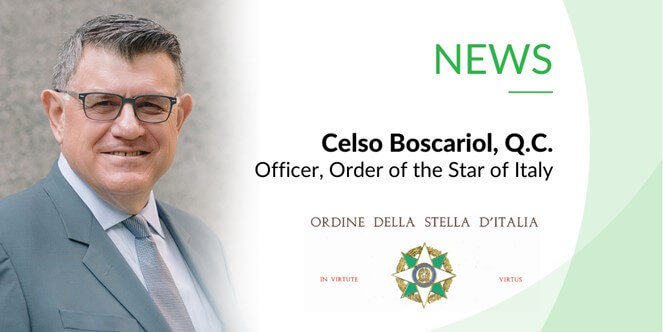Canada is strengthened as a global center of technological innovation at the Aerospace Innovation Forum 2018 in Montreal, the world’s strategic event of the aerospace cluster dedicated this year to the most innovative technologies in the industry.
It is the B2B strategic event that gathers the leaders of the world aerospace industry to discuss the best practices of the sector and generate new business opportunities. The sixth edition of the Aerospace Innovation Forum took place on April 16 and 17 in Montréal, organized by AéroMontréal (Québec aerospace cluster) at the opening of the International Aerospace Week. Since 2006, the Forum has mobilized the Canadian aerospace industry and supports its growth and influence on the international scene of the industry. Just in the previous edition of 2016, at the Palais des Congrès de Montréal, the event counted 1200 participants, 50 exhibiting companies, 80 international speakers and 1400 B2B meetings.
The themes of the Aerospace Innovation Forum 2018
Airbus, Bombardier and Ernst & Young were the main partners of the Forum this year, organized in collaboration with the National Research Council Canada (NRC), whose program focused on the issue of disruptive technologies, the most innovative in aerospace and their impact on other economic sectors. Six technologies have emerged with the greatest potential for transformation of the industry:
1. Advanced production: new generation intelligent robotic systems, artificial intelligence (AI and machine learning), Internet of Things (IoT) and cloud computing;
2. Vehicles with additive manufacturing: 3D data models to meet the challenges of certification, production scales and new materials;
3. Clean technologies: solutions and technologies related to emissions, energy consumption, noise, reuse and recycling of waste;
4. Big data for mobility, aviation and space: commercial evaluation of the data generated during operation (through sensors) through the development of machine learning and data mining solutions;
5. On-demand autonomy and mobility: design, production and marketing of infrastructure and components for on-demand vehicles and autonomous systems based on a vertical take-off and landing vehicle network (VTOL);
6. Design and virtual testing: synthetic environments, machine learning and artificial intelligence to improve design and certification, on-demand autonomous mobility and eco-technology programs.
Visitors to the Forum had the opportunity to participate in top-level events, including plenary sessions, conferences, workshops and B2B meetings with the world’s leading industrial players, including Airbus, Bell, Boeing, Bombardier, CAE, Embraer, GE Aviation, L-3 MAS, NASA, Pratt & Whitney, Rolls-Royce and Uber. They also had access to an exhibition space and networking opportunities, holding a conversation during the Forum with more than 1,400 business meetings between SMEs in Quebec and the major global clients.
The entrepreneurial Italian mission
An Italian entrepreneurial mission also arrived to Montreal to take part at the week dedicated to aerospace innovation. The delegation organized by the Government of Québec, in collaboration with the Embassy of Canada in Italy and with AIAD (Federation of Italian Companies for Aerospace, Defense and Security) has been following the Forum on 16 and 17 April and was involved in networking activities. The Ministry of Economy, Science and Innovation (MESI) of the Government of Québec with the support of AéroMontréal has also organized for the Italian companies a two-day visit to some companies operating in the aerospace industry of the Canadian Province, innovation leader in the field and ranked fourth in the world by revenue.
The aerospace industry in Canada
The Canadian aerospace industry consists of 700 companies, 28 billion dollars of gross domestic product and over 200 thousand employees. With these numbers, Canada stands as one of the best industrial ecosystems in the aerospace industry.
The federal government is supporting innovation in the aerospace industry and is working to attract investments in this important sector of the economy, focusing on technology, talent and the infrastructure needed to guide the future of this innovative sector.
For example, Bell Helicopter Textron Canada, based in Mirabel, Quebec, since 1986, has produced more than 5000 commercial helicopters for customers from around the world. This type of investment in production is mainly carried out through the Strategic Innovation Fund of the Canadian government, which aims to stimulate economic growth, strengthen and expand the role of Canadian companies in global supply chains, supporting economic strategies and attract investment able to create new jobs.
In addition to the Strategic Innovation Fund, they were established hundreds of programs and services to help companies to innovate, create jobs and stimulate the Canadian economy. Initiatives aimed at developing an increasingly qualified workforce, the result of collaboration between industry and universities, with the ultimate goal of strengthening Canada’s position as a global innovation hub.
New investments by the Canadian Federal Government
During the Forum, the Canadian Minister for Innovation, Science and Economic Development, Navdeep Bains, announced a $ 49.5 million loan to a consortium of aerospace companies led by the aforementioned Bell Helicopter Textron Canada.
Thanks to these funds, Bell and 18 industrial and academic partners will develop innovative technologies for new generation helicopters able to fly with or without crew, as well as flight systems that will increase aircraft energy efficiency, they will make its use more sustainable by the environmental point of view, also reducing noise pollution.
The announced investments are expected to create more than 300 jobs in Canada, totaling nearly $ 200 million in gross domestic product over the next five years and strengthening Canada’s position as a global innovation hub. During this project, Bell and its partners will invest $ 125 million in the Canadian aerospace industry.
The industrial and academic consortium partners include Pratt & Whitney Canada, CMC Electronics, an Esterline Electronic Systems, several small and medium-sized enterprises and nine Canadian universities.








 .
. 

